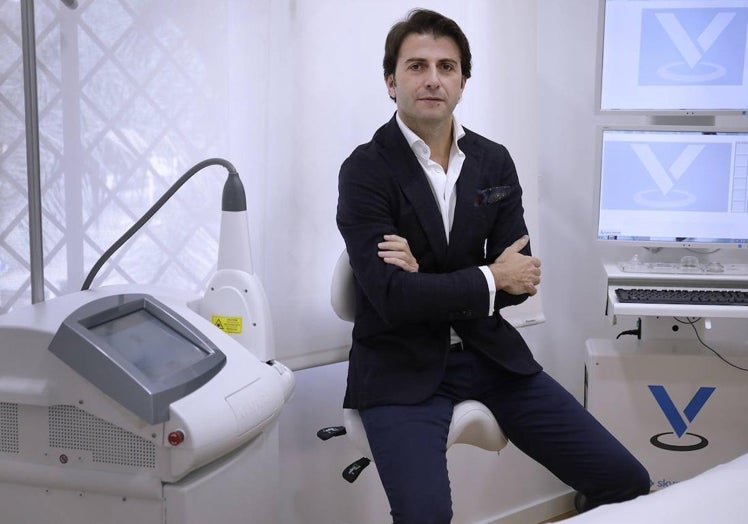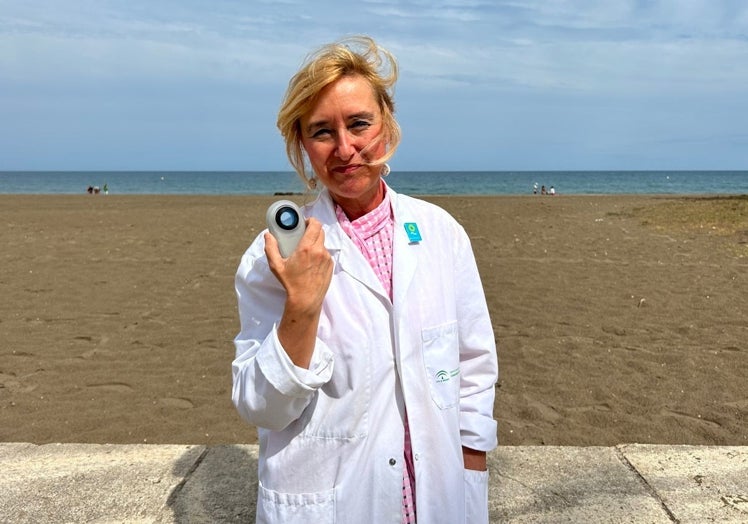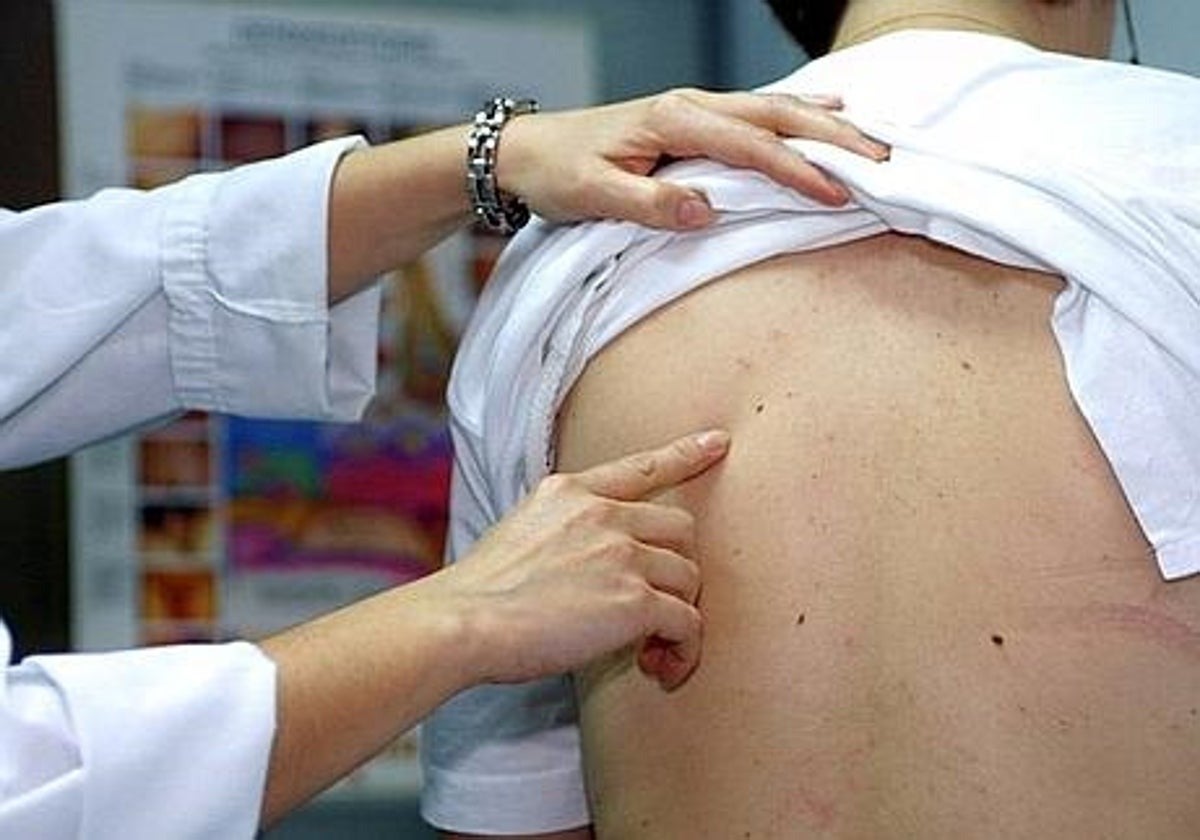Skin cancer is on the rise in Malaga: these are the latest prevention recommendations from the experts
Dermatologists estimate that 6,000 basal cell and squamous cell tumours (the most common types) and 600 melanomas (the one with the highest mortality rate) are diagnosed each year in the province
Skin cancer is taking a heavy toll on Malaga, according to dermatologists consulted by SUR. Leandro Martínez Pilar, president of the Andalusian branch of the Spanish academy of dermatology and venereology (AEDV), estimates that in the worst-case scenario, the province sees around 600 new cases of melanoma each year. Melanoma is the most aggressive type of skin cancer, although the most common forms are basal cell and squamous cell carcinomas. These non-melanoma skin cancers account for 90% of all cases.
Martínez estimates that around 6,000 of these could be diagnosed in Malaga each year, underlining the scale of a disease whose prevention is, without doubt, straightforward: avoid excessive exposure to the sun's ultraviolet rays and protect vulnerable areas, including the nose and ears, say experts.
Between 2019 and 2023, the number of such tumours in the province rose by 40%. In 2022, the national incidence rate was 47 cases per 100,000 inhabitants, but in Malaga - based on estimates - the local rate is thought to be significantly higher. According to Martínez, the figures are "striking and alarming". The province could be looking at 371.1 cases per 100,000 inhabitants across all three major types of skin cancer, he suggests - and even that may fall short. "We'd probably be underestimating it," he notes, pointing out that many epidemiological studies overlook private healthcare cases and others that go unrecorded.
"Melanoma is the most aggressive form of cancer. At the Hospital Regional, more than 180 cases were diagnosed last year - almost double the number recorded a decade ago," says Martínez, who is also head of the dermatology department at the former Hospital Carlos Haya. The outlook is far from optimistic: by 2040, the number of skin cancer cases is expected to rise by 40%, while the incidence of melanoma has already increased by 50% over the past ten years in Spain.
Melanoma typically appears as a mole. "In just a few years, we've gone from having barely effective treatments to achieving long-term survival in patients with very advanced disease," he explains. This progress is thanks to new therapies: immunotherapy, which uses drugs to stimulate the immune system to attack tumour cells, and targeted therapies for specific mutations in aggressive or metastatic melanoma, using combinations of inhibitors. "We didn’t have any of that before - now, 50% of patients with advanced melanoma survive thanks to these new treatments," says the doctor, stressing that melanoma remains the most preventable form of cancer.

Survival depends on prevention and early diagnosis. "We must adopt a culture of sun protection and that’s not just about using sunscreen. During the sunniest months, between midday and 5pm, people should avoid direct exposure, as ultraviolet radiation is at its strongest," he says. Protective measures include wearing hats, sunglasses and seeking out natural or built shade.
As for diagnosis, "catching melanoma early is as good as curing it", especially if the disease has not yet spread from the skin's outer layer to the dermis. That’s why self-checking skin lesions is so important.
Magdalena de Troya, head of dermatology at Hospital Costa del Sol and director of the Soludable prevention project, also stresses the importance of early detection. "If we get into the habit of checking our skin regularly and spotting any warning signs of skin cancer, we can detect it in time. And if detected early, it can be cured in 100% of cases."
She recommends the ABCDE rule as a memory aid: A for asymmetry, B for irregular borders, C for varied colours, D for diameter over six millimetres, and E for elevation or evolution. It's also important to watch for itching, stinging or bleeding. "Moles usually look similar, so changes tend to stand out," she adds.
More than 90% of skin cancers are linked to excessive exposure to ultraviolet radiation, which is why seeking shade is the most sensible form of protection - along with using sun cream, wearing hats and covering up with clothes such as long skirts or sleeves. Sunscreen products themselves have improved significantly in recent years.

Dr De Troya highlights immunotherapy as one of the major breakthroughs that mean melanoma is no longer necessarily a fatal disease. However, she warns that the other two types of skin cancer - basal cell and squamous cell - though less directly linked to mortality, still have significant effects on patients' lives. "They reduce quality of life considerably, as they usually appear on the face or other sun-exposed areas. They can leave serious scarring and sometimes even lead to functional problems, including facial paralysis, breathing or swallowing difficulties, vision issues, or damage to the eyelids, nose or lips," she says. These consequences, she adds, can have a serious impact on people's lives.
That's why it’s crucial to protect the ears and nose with sunscreen. "The ears and the bridge of the nose are among the most exposed areas of the head to UV radiation, and it's important to apply cream there too and wear a hat," she says. A brimmed hat is even better for protecting the whole face and, ideally, a wide-brimmed one, "as that can also cover the ears, which are one of the most common sites for various forms of skin cancer and are often overlooked when applying sun cream".

